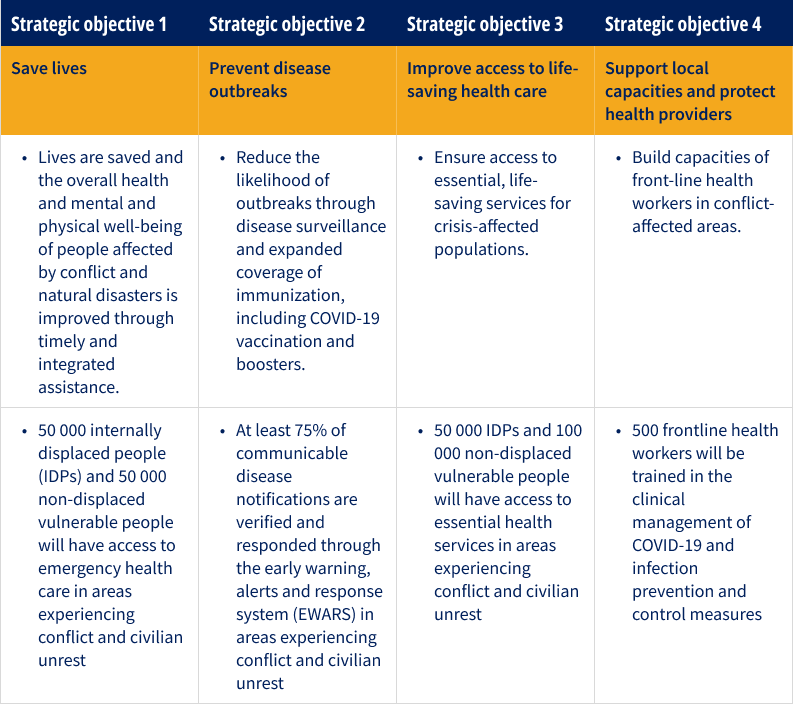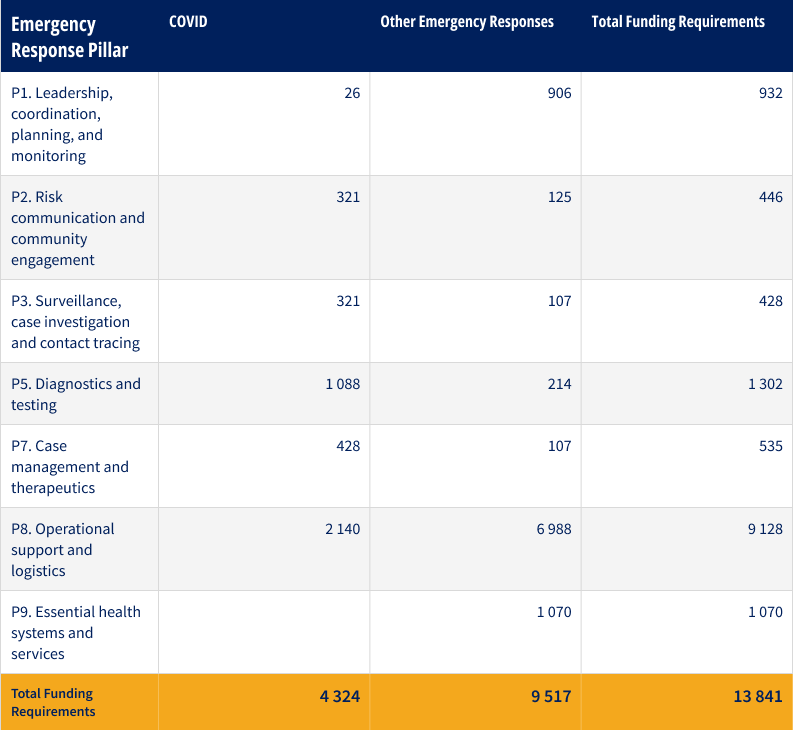
Myanmar
Myanmar
- People in need: 17.6 million1
- People targeted: 4.5 million
- People in need of health assistance: 2.5 million
- Requirements (US$):13.8 million
Context
Since the military takeover on 1 February 2021, continuous political instability in Myanmar has severely reduced access to essential health services for all populations in need. Simultaneously, public confidence in the services provided by the de facto authorities is declining.
Routine immunization has been disrupted, leaving large numbers of children unprotected against preventable diseases, increasing the risk of unpredictable outbreaks and worsening the population’s already damaged health outcomes. Surveillance, diagnosis and treatment for tuberculosis (TB) and malaria are also extremely limited, putting people at risk of death. Due to the lack of surveillance mechanisms, diagnostic testing and vaccines and therapeutics, vaccine-preventable diseases and TB are on the rise. This poses a significant threat to the entire region as any outbreak is likely to go undetected and cross borders.
Resistance against the de facto authorities has accelerated in many parts of the country since September 2021. Escalation of the conflict has resulted in increased displacement and the need for emergency care for conflict-related injuries caused by fighting and explosive ordnance. Access to the most vulnerable populations is extremely limited by the de facto authorities. Banking operations are severely disrupted, and the importation of vital supplies for laboratory detection and case management of conditions with epidemic potential is becoming increasingly challenging over time, further hampering the provision of life-saving interventions.
Emergency response
WHO Myanmar will work with relevant health system stakeholders, including the public and private sectors, as well as ethnic health organizations (EHOs), to deliver services to people in need. While advocating for the safe provision of health care through the revitalization of the public health sector, WHO will engage with non-state partners to establish alternative channels for access to emergency and essential health services, especially in conflict-affected areas. WHO is working to build the capacities of partner organizations already on the ground to expand and improve the health services offered to those who are prevented from accessing basic and life-saving care. Opportunities for expanding services through these alternative channels will be explored and implemented where feasible. The prioritization of services and mode of delivery will vary by location but with the same overall objective to save as many lives as possible. WHO Myanmar will also promote access to quality health assistance.
Strategic objectives


Key activities
Promote access to quality health services, including:- Reproductive, maternal, neonatal and child and adolescent services
- Mental health and psychosocial support
- Diagnosis and treatment of malaria and tuberculosis
- Basic care for non-communicable diseases Direct service provision through permanent clinics, and where absent, through mobile and temporary clinics
- Prioritize the protection of frontline health providers, including through the provision of emergency training, personal protective equipment and ensuring equitable access to vaccinations, in response to COVID-19
- Work with partners to coordinate diagnosis, surveillance, infection prevention and control, case management, vaccination, risk communication and community engagement, support for stockpiling of medicines and personal protective equipment (PPE) and training for frontline staff
Funding requirements
Overall country funding requirements, including COVID-19, by pillar (US$’000)


Success Stories
Strengthening essential health services in Myanmar with support from the South-East Asia Health Pandemic Response and Preparedness Project
Sayama Seng Htoi has been working at Jubili clinic for 2 years, located in the non-government-controlled area of Injang Yang township in Kachin State. Between July 2021 and January 2022, Jubili clinic and others like it had a limited volume of essential supplies necessary for treating common diseases and preventing COVID-19. Contending with several challenges such as these, Seng Htoi and other staff faced difficulties in providing basic medical care to communities, especially infection prevention and control (IPC).
In 2022, with funding support from WHO, Health Poverty Action (HPA) provided the clinic with PPE, hand gel, soap and non-contact thermometers. The supplies helped Seng Htoi and other health care workers to treat mild cases of COVID-19. HPA also provided training on the usage of essential medicines.
“I have been working at Jubili for nearly 2 years, struggling for years to provide basic health care to our community because we don’t have enough medicines. During the outbreak, we didn’t have enough supplies such as PPE items and other supplies, but I had given medical care to communities. I couldn’t stay without taking care of my patients. From January to May 2022, 274 patients with common diseases were treated. Now, our clinic has enough supplies for common diseases. So, I can serve medical care to my community with enough supplies,” Seng Htoi recalls.
For more information
Dr. Gabriel Novelo | WHE Team Lead | WHO Myanmar | novelog@who.int
Dr. Win Bo | National Professional Officer | WHE | WHO Myanmar | bow@who.int

